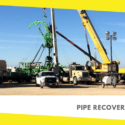Best Practices for Implementing Equipment Management Software Across Multiple Locations

Contents
ToggleStreamlining Operations and Boosting Efficiency
Managing equipment across multiple locations can be daunting in today’s fast-paced business landscape. As companies expand and reach new horizons, the need for a centralized system to track and manage equipment becomes increasingly evident. This is where equipment management software comes to the rescue. Using advanced inventory tracking capabilities, this software empowers businesses to optimize their operations, reduce downtime, and improve overall efficiency. However, implementing such a system across multiple locations requires careful planning and execution to ensure a seamless transition and maximum benefits.
This blog will explore the best practices for successfully implementing equipment management software across multiple locations, addressing common pain points, and how it can transform your business operations.
1. Assess Your Business Needs
Begin by conducting a comprehensive audit of your current equipment management processes. Identify pain points and areas that require improvement. Involve key stakeholders from different locations to gain valuable insights and a holistic understanding of the challenges.
2. Choose the Right Equipment Management Software
Selecting the right equipment management software is the backbone of a successful implementation. Look for a solution that aligns perfectly with your business requirements, offers real-time inventory tracking, and seamlessly integrates with your existing systems. Opt for user-friendly software with an intuitive interface to ensure smooth adoption by your staff across various locations.
3. Prioritize Training and Education
While implementing new software, the value of training and education cannot be stressed enough. Equip your employees with the knowledge and skills to efficiently utilize the equipment management software. Conduct comprehensive training sessions for staff at all locations, and provide ongoing support to address any queries or concerns that may arise during the implementation process.
4. Centralize Data and Communication
Effective communication and centralized data are essential for seamless implementation across multiple locations. Implement a centralized system that enables real-time data sharing and collaboration. This ensures all stakeholders are on the same page, promoting transparency and making decision-making more efficient.
5. Conduct Pilot Runs
Before a full-scale implementation, conduct pilot runs in a controlled environment. Choose a couple of locations to test the software and gather feedback from the staff. This step allows you to identify any issues or adjustments required before expanding the implementation to all locations.
6. Set Achievable Goals
Define clear and achievable goals for the implementation process. It could improve equipment maintenance turnaround time, reduce inventory losses, or enhance asset tracking accuracy. Having specific goals in mind will help you measure the success of the software implementation and identify areas that need further improvement.

7. Foster a Culture of Adoption
Encourage a culture of adoption and enthusiasm among your employees. Address any resistance to change by highlighting the benefits of the equipment management software. Celebrate small successes and acknowledge the efforts of employees embracing the new system. This positive reinforcement goes a long way in driving successful implementation.
8. Monitor and Evaluate Performance
Once the software is up and running, closely monitor its performance across all locations. Regularly evaluate key performance indicators (KPIs) to measure the impact on your business operations. Analyze data to identify patterns and trends, enabling you to make data-driven decisions and further optimize your equipment management processes.
9. Ensure Data Security and Compliance
Data security should be a top priority when implementing equipment management software across multiple locations. Protecting sensitive information about your equipment, inventory, and maintenance processes is crucial to maintaining customer trust and avoiding potential legal repercussions. Choose a software solution that employs robust security measures, such as encryption and access controls, to safeguard your data from unauthorized access.
Ensure the software complies with relevant industry regulations and data protection laws. Conduct regular audits to assess compliance and make necessary adjustments to maintain data integrity and security.
10. Leverage IoT and Integration Capabilities
To further enhance the capabilities of your equipment management software, consider leveraging the Internet of Things (IoT) and integration capabilities. IoT-enabled devices can provide real-time data on equipment health, usage patterns, and performance, allowing you to identify maintenance needs and optimize asset utilization proactively.
Integrating the equipment management software with other business systems, such as Enterprise Resource Planning (ERP) and Customer Relationship Management (CRM), enables seamless data flow and enhances overall operational efficiency. This integration streamlines processes and provides a comprehensive view of your business operations, allowing for better decision-making and resource planning.
Conclusion
Implementing equipment management software across multiple locations can be a game-changer for your business. If you’re ready to take your equipment management to the next level, consider exploring Foundation Software’s cutting-edge solutions. With its state-of-the-art inventory tracking software and industry-leading support, Foundation Software is a trusted partner for businesses across various sectors.
Don’t let your equipment management hold you back. Embrace the power of technology and witness the transformation firsthand.
Visit Foundation Software today and embark on an efficiency, growth, and success journey.
You may like this
Recommended For You
Water Treatment and Its Different Methods
Most Inside
Most Inside offers high-quality recommendations and valuable updates to enhance all aspects of your life, providing premium guidance and enriching experiences.




